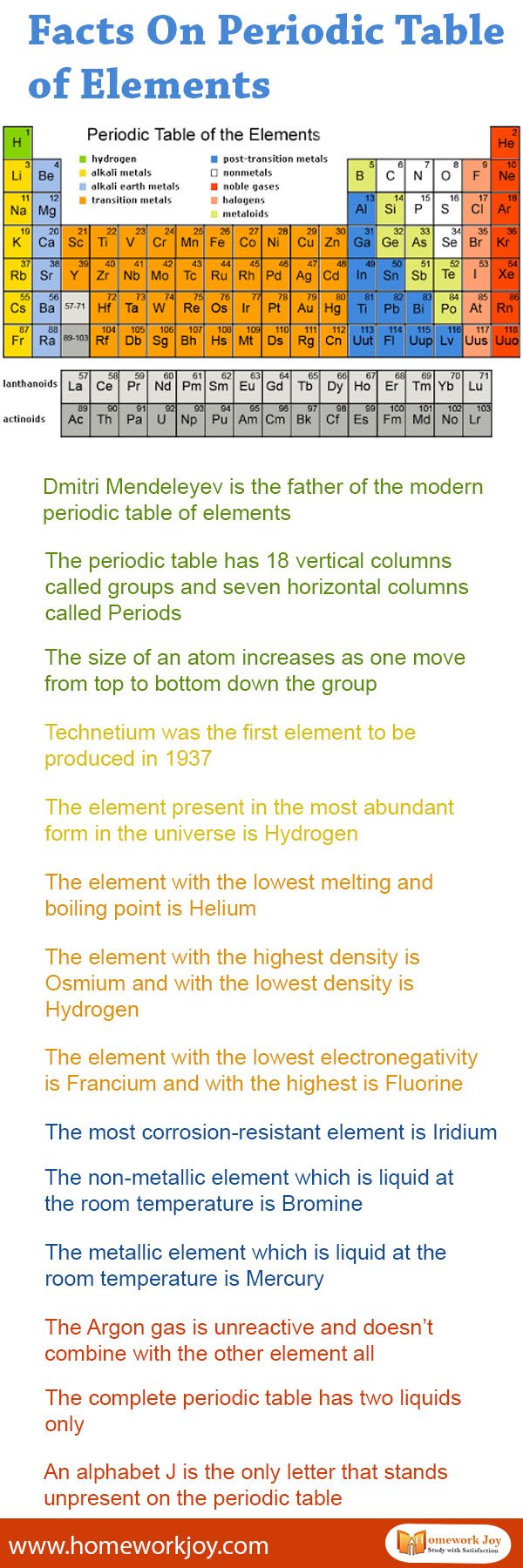The periodic table is the way of presenting facts about elements. The structure of their atoms lists elements. It includes various information about these elements, like how many protons an electron they have in their outer shell. From top to bottom and left to right, the periodic table includes many interesting facts. Thus here we are going to discuss facts on the periodic table of elements.
Founder of Periodic Table
Dmitri Mendeleyev is the father of the modern periodic table of elements. In 1869, a Russian chemist started the development of the periodic table named Dmitri Mendeleyev. He began by arranging elements according to their atomic mass.
Columns of the Periodic Table
The periodic table has 18 vertical columns called groups and seven horizontal columns called Periods. All the members of the same family have the same valence electron. Also, they have similar chemical properties.
Size of the Atom
As one moves from top to bottom down the group, the size of an atom increases. The relative size of the atoms in the periodic table is based on the atomic radius data. If you move down the column, then the size of the atoms increases. As you move across the row, the overall size decreases. Besides this, elements to the right have more electrons, protons, and neutrons.
Unique Elements
Carbon is a unique element in the periodic table. It is everything and comprises 20 percent weight in all living organisms. Silicon is found in all computer chips. It is impossible to imagine a digital world without carbon. The element with the lowest melting and boiling point is Helium. It is colorless, odorless, and tasteless. Thus it does not reacts with other elements.
Properties of Elements
Technetium was the first element produced in 1937. Florine is the element with the highest electronegativity, and the lowest is Francium. The most corrosion-resistant element is Iridium. The non-metallic element that is liquid at room temperature is Bromine. The metallic element, which is liquid at room temperature, is Mercury.
Facts About Hydrogen
The element present in the most abundant form in the Universe is Hydrogen. The element with the highest density is Osmium, and the lowest density is Hydrogen. Hydrogen also comprises the majority of the Universe’s mass that is 78 percent. Hydrogen is the only element that does not have any neutrons.
If you need more help related to similar topics, take instant online homework help from our professors.
